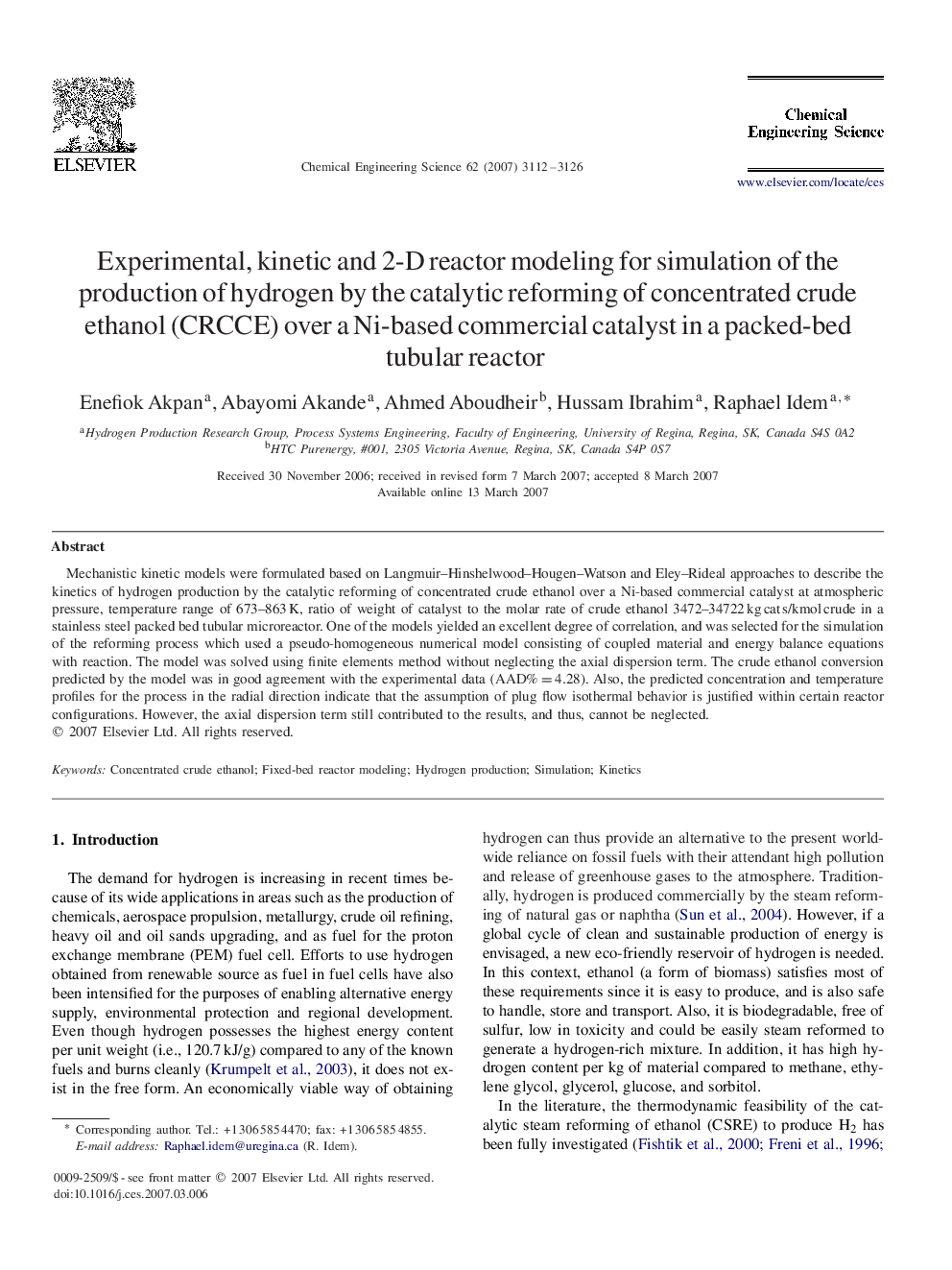| کد مقاله | کد نشریه | سال انتشار | مقاله انگلیسی | نسخه تمام متن |
|---|---|---|---|---|
| 159905 | 457051 | 2007 | 15 صفحه PDF | دانلود رایگان |

Mechanistic kinetic models were formulated based on Langmuir–Hinshelwood–Hougen–Watson and Eley–Rideal approaches to describe the kinetics of hydrogen production by the catalytic reforming of concentrated crude ethanol over a Ni-based commercial catalyst at atmospheric pressure, temperature range of 673–863 K, ratio of weight of catalyst to the molar rate of crude ethanol 3472–34722 kg cat s/kmol crude in a stainless steel packed bed tubular microreactor. One of the models yielded an excellent degree of correlation, and was selected for the simulation of the reforming process which used a pseudo-homogeneous numerical model consisting of coupled material and energy balance equations with reaction. The model was solved using finite elements method without neglecting the axial dispersion term. The crude ethanol conversion predicted by the model was in good agreement with the experimental data (AAD%=4.28)(AAD%=4.28). Also, the predicted concentration and temperature profiles for the process in the radial direction indicate that the assumption of plug flow isothermal behavior is justified within certain reactor configurations. However, the axial dispersion term still contributed to the results, and thus, cannot be neglected.
Journal: Chemical Engineering Science - Volume 62, Issue 12, June 2007, Pages 3112–3126